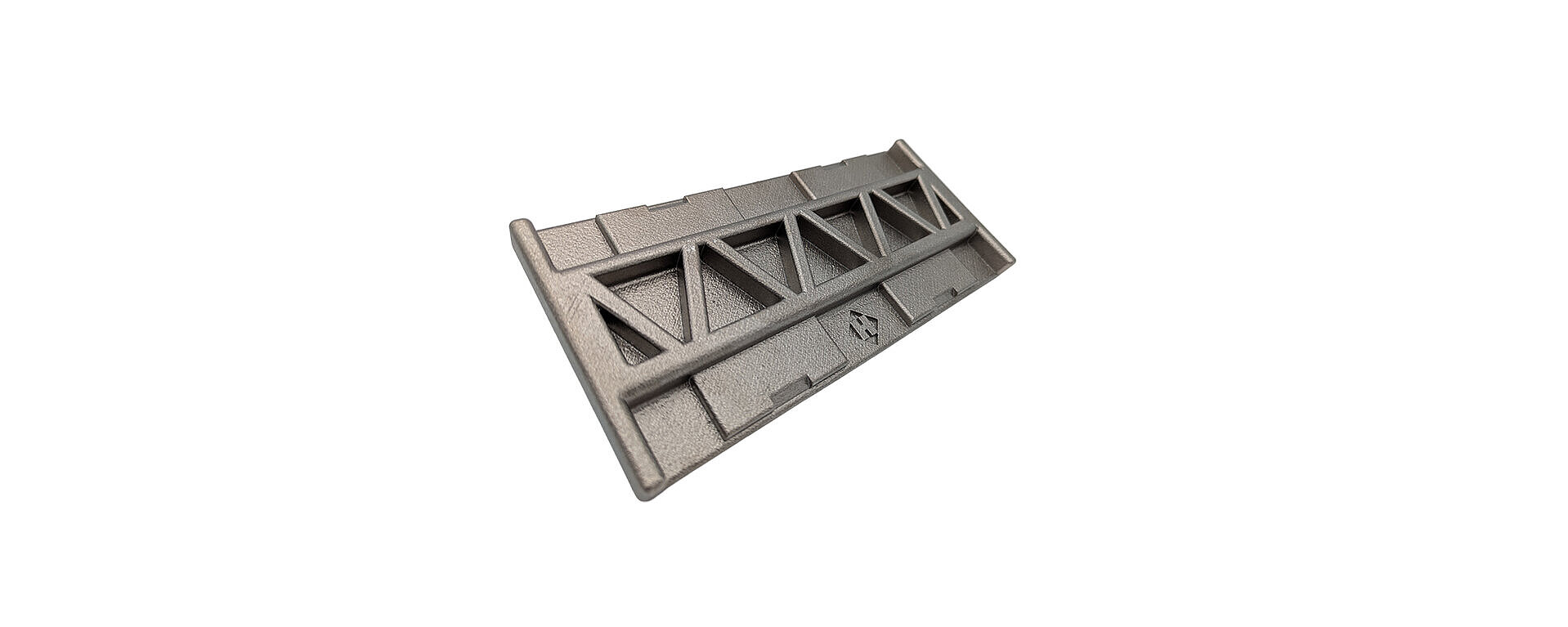High-Tech In Battery Modules
Hirschvogel is working on the development of high-quality structural elements for battery modules in electric vehicles. These include end plates made of aluminum, steel, or stainless steel, whose properties increase battery life and can also be produced economically – representing technological progress that pays off for both vehicle manufacturers and vehicle operators.
To get an electric truck moving, up to 130 battery modules have to supply power – reliably and, depending on where the vehicle is being used, even under the most complex ambient conditions. These battery modules consist of bundled battery cells. Regardless of whether pouch cells or prismatic cells are used, each module also has heat sinks, pressure pads, busbars, and an end plate that clamps the cells and accessories together. How these end plates contribute to the state of health (SOH) of the battery cells and thereby increase the life cycle of the battery modules is a current topic in both science and in development efforts at the Hirschvogel Group.
The requirements for the end plate of each battery module are diverse. On the one hand, the end plates are designed to prevent the cells from expanding uncontrollably due to heat generation during charging and discharging. On the other hand, they are intended to support thermal conductivity. Furthermore, the individual battery cells expand over their lifetime, so the end plates must compensate for cell thickness growth and thereby withstand potential forces of up to 30 kilonewtons acting on them.
With this in mind, the service life of the battery module increases if the pre-tensioning of the end plates is optimally aligned with the cell chemistry and the design of the specific battery cells. All of this places extreme demands on the material, product design, and processing.
End plates made of forged aluminum, steel, or stainless steel
At Hirschvogel, we work on high-tech solutions that, unlike conventional end plates made of plastic, metal-plastic composites, or cast aluminum, are produced from forged aluminum, steel, or stainless steel. Compared to cast aluminum, forged aluminum has higher strength and is non-porous, the latter of which improves the impermeability of the battery module.
End plates made of forged steel or stainless steel promise better product properties still, with even higher tensile strength, yield strength, and heat resistance. Steel is also more cost-effective than aluminum and its production generates 75% fewer CO2 emissions than aluminum production. The challenge lies in making steel lightweight. Our goal is to produce end plates that offer our customers the best possible product properties, costs, CO2 balance, and weight.
Another advantage of the development partnership with Hirschvogel is that, in addition to simulating and designing the components, we can also offer all relevant forging technologies (aluminum, steel, stainless steel), including heat treatment, as well as a wide range of further machining and processing options from a single source.
Fig.: High-tech end plate for battery modules, weight-reduced and temperature-resistant
